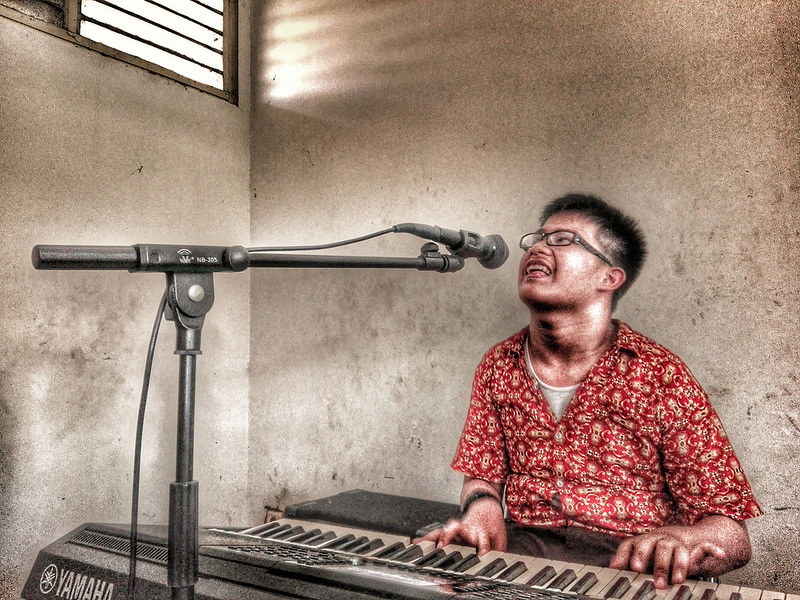Academic Environment
About Guidance
Nasibi (2003) defines guidance as all the activities rendered by educational institutions which are primarily concerned with assisting individual students understand themselves, that is, their characteristics and potentials.
About Counselling
Nasibi (2003) describes counselling as offering, advising and cautioning students who may have gone astray or are out of control.
According to Nasibi (2003, p. 46), guidance and Counselling is an organized service established as an integral part of the school environment designed to promote the development of the students and assist them towards the realization of sound wholesome adjustment and maximum accomplishments commensurate with their potential. Through these services, an individual achieves greater awareness of his or her potential. Nasibi (2003, p. 52) points out that the role of the counsellor in the school setting is that of a coordinator as they coordinate the resources available in the school and the community to help a child with either psychological or health problems. The counsellor also makes, coordinates, and maintains liaison relationships with referral services. Guidance and Counselling department should also act as a liaison, representative and mediator to help create an effective learning environment. According to Nasibi (2003, p.111), the activities and content of a guidance and counselling programme should cover some of the areas like career talks. She adds that competent professionals should regularly be invited to talk to students in schools on career opportunities, university education requirements for careers, prevailing socio-economic conditions and their effect on career opportunities.
Six categories of learners with special needs
The six categories include:
1. Sensory Impairment
Learners with impaired sensory organs may include: hearing impairment, visual impairment and deafblind
A) Learners with hearing impairment
Categories of hearing loss according to Severity
There are five categories of hearing loss according to Severity
Classification according to age onset
There are two types:
Classification according to the part of the ear affected
The ear is functionally divided into three parts that is the outer ear, the middle ear and the inner ear. Any damage or infection to any part of the ear causes hearing loss. There are THREE types of hearing loss according to the part of the ear affected namely:
Characteristics of Learners with hearing impairment
Characteristics of learners who are deaf:
Educational Implications faced by Learners with hearing Impairment
Effects of hearing impairment of learners
Intervention strategies for hearing impairment
Incidence and Prevalence of learners with Hearing Impairments
Incidence refers to the number of new cases of learners with special needs and disabilities identified in a given period of time. Prevalence refers to the total number of existing cases (new and old) of learners with special needs and disabilities in the population at a given time.
B) Learners with visual impairment
These learners have difficulties in the structure or functioning of the eyes. Visual difficulties range from slight visual impairments to blindness
i) Blindness Learners in this category have total loss of the sense of vision and are not able to tell darkness and light ii) Learners with low vision These are learners who have significant visual handicap as well as significant vision that can be used. Learners in this category can use their vision for school learning activities under varying conditions, depending on the amount of light, contrast and individual differences Characteristics of learners with Visual Impairments
Educational Implication for Learners with visual Impairments
Learners with visual impairments may face the following challenges in school setup:
Effects of visual impairment on learners
a) Effects of visual impairment on psychological development
Intervention Strategies for Learners with Visual Impairments
There are three levels of interventions:
a) Medication Intervention Most eye diseases and defects can be prevented or treated. Learners should therefore be referred to hospitals that have eye units to undertake:
Trachoma is an infection of the eyes that may result in blindness after repeated re-infections. It is the world's leading cause of preventable blindness and occurs where people live in overcrowded conditions with limited access to water and health care. Trachoma spreads easily from person to person and is frequently passed from child to child to mother within the family. Infection usually first occurs in childhood but people do not become blind until adulthood. The disease progresses over years as repeated infections cause scarring on the inside of the eyelid, earning it the name of the "quiet disease" the eyelashes eventually turn in. This causes rubbing of the cornea at the front of the eye. The cornea becomes scarred leading to severe vision loss and eventually blindness. Cataract is a condition in which the lens inside the eye loses transparency and turn milky, cloudy or opaque. b) Educational Intervention i) Learners with low vision;
C) Deafblind
Deafblindness is a condition where a person has both visual and hearing impairment. The degree of loss may vary. Learners look and respond to smiles and follow moving objects with the eye. They have no difficulties with carrying out daily living skill. Have difficulties in developing spoken language.
Educational Intervention
About 15 out of 100,000 (0.015) of school age going children have deaf blindness. East African Medical Journal, Vol.83, no4 (2006)
Reference
Nasibi, W.M.W. (2003). Discipline: Guidance and Counselling in Schools. Nairobi. Strongwall Africa.
Catherine Kiprop, Dr., Emily Bomett, Dr., John Kipruto, Dr., and Jane Jelimo Michael. INSTITUTIONALIZING GUIDANCE AND COUNSELLING-A PANACEA FOR MANAGING STUDENT DISCIPLINE IN KENYAN SECONDARY SCHOOLS IN THE POST-CANING ERA. 1st ed. Vol. 3. Eldoret: European Centre for Research Training and Development UK (www.eajournals.org), 2015. British Journal of Education. Eajournals.org. Web. 12 Jan. 2017. ISSN 2054-6351(Print);ISSN 2054-636X(Online)
0 Comments
Leave a Reply. |
RSS FEEDS
ARCHIVES
Archives
May 2024
CATEGORIES
Categories
All
|
We Would Love to Have You Visit Soon! |
Hours24 HR Service
|
Telephone0728 450425
|
|
8-4-4 materialsLevels
Subjects
|
cbc materialsE.C.D.E
Lower Primary
Upper Primary
Lower Secondary
Upper Secondary
|
teacher support
Other Blogs
|









 RSS Feed
RSS Feed